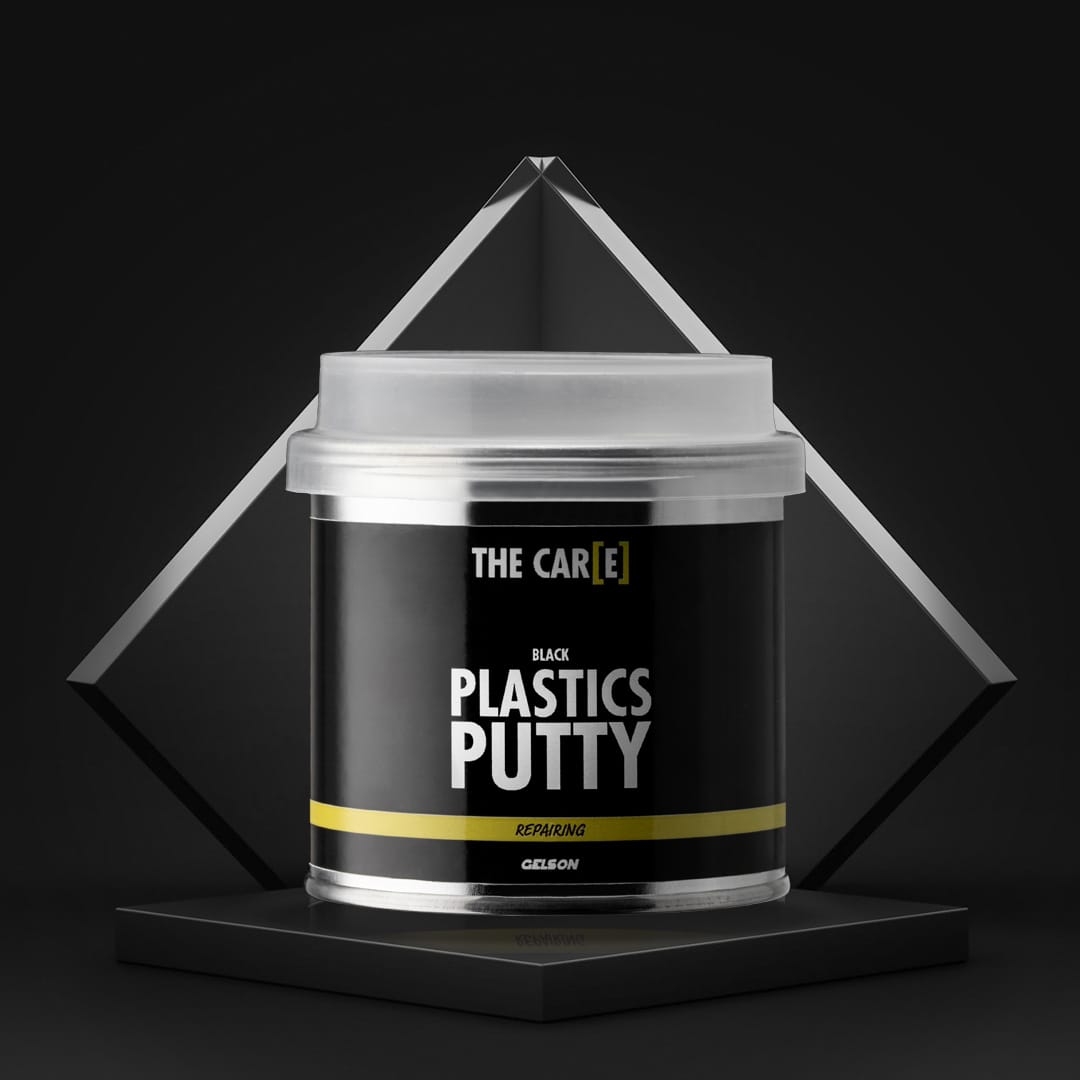


Plastics Putty black is a polyester-based plastic bumper putty, specially developed for application on car bumpers and moldings. It is ideal for correcting light damage and defects on bumpers , panels and other plastic parts of the vehicle. Unlike traditional fillers, it has a high elasticity which gives it impeccable adhesion to plastic and notable resistance to temperature variations and thermal deformations.
Discover the entire line of The Care putties.
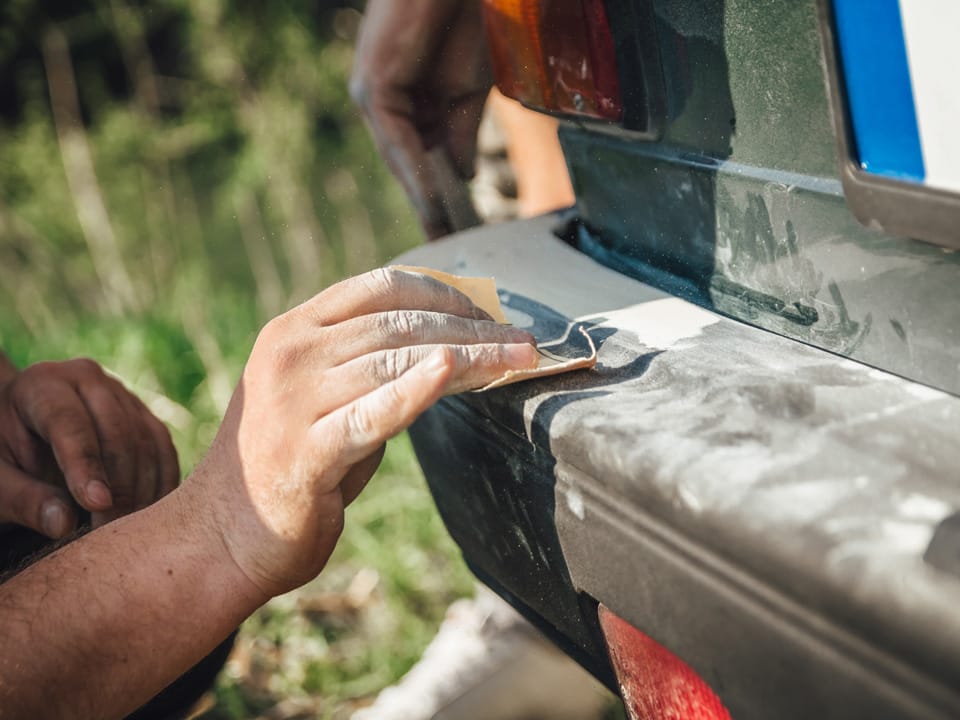

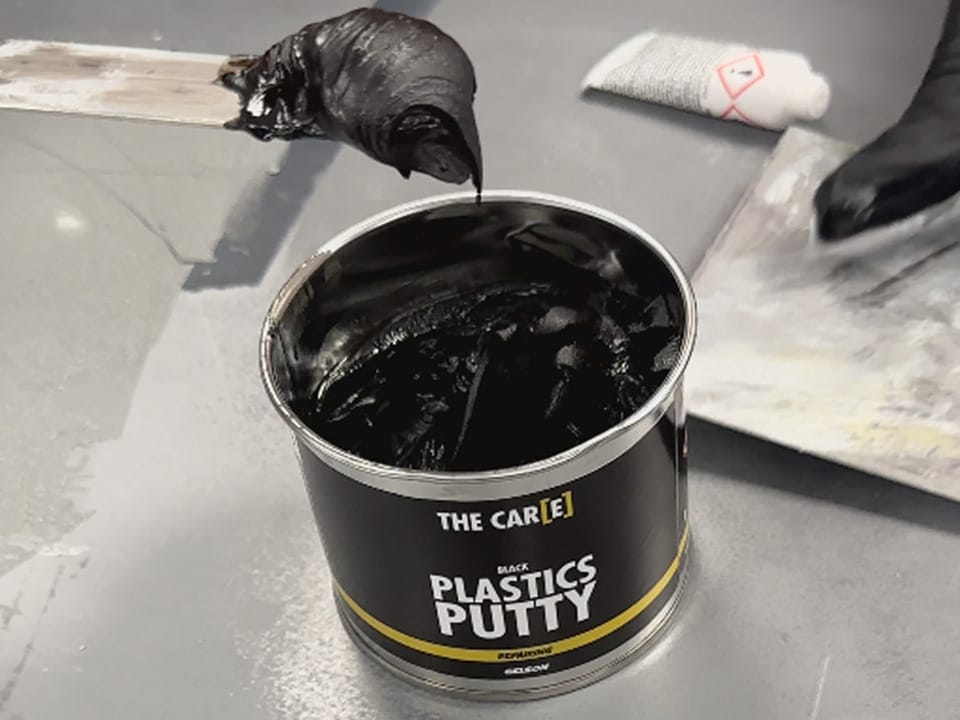
Plastics Putty black is a high quality putty with an extremely elastic and flexible formulation that allows you to obtain professional results even in DIY. The repair process is really simple and fast, thanks to the high workability and speed of drying which make this putty a fundamental ally in car detailing operations: after cleaning the surfaces with Degreaser and TNT Cloth , simply apply a layer of product, level it with the Putty Knife spatulas and wait a few minutes until it is completely dry before proceeding with the application of a texturized spray paint such as Texturizing black and Texturizing grey, or a smooth one such as Paint black and Paint grey. A piece of cake for true car detailing lovers.
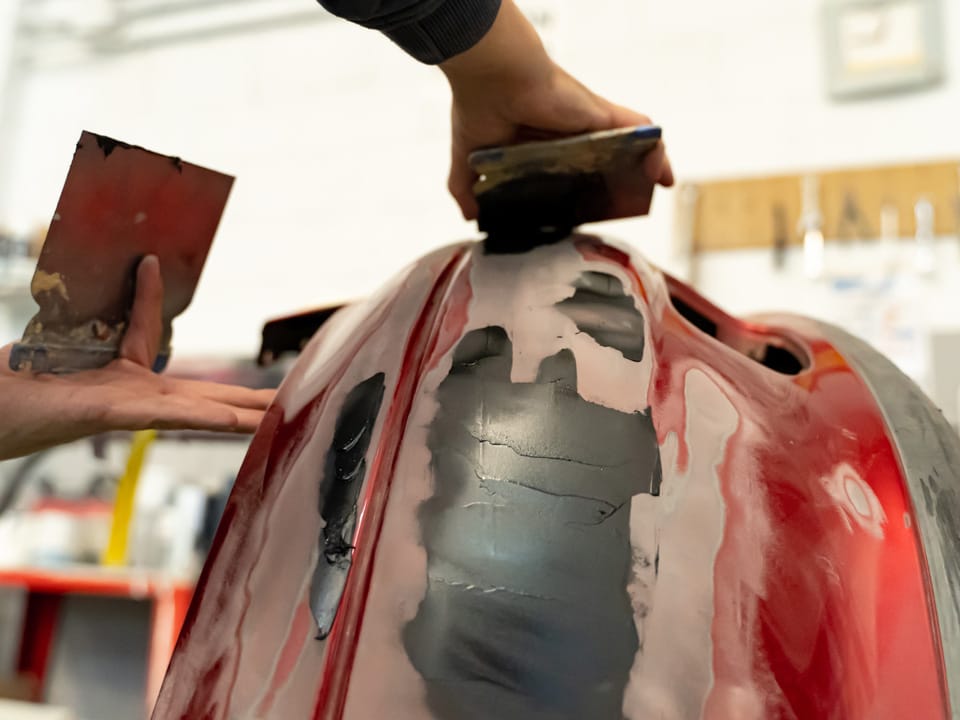
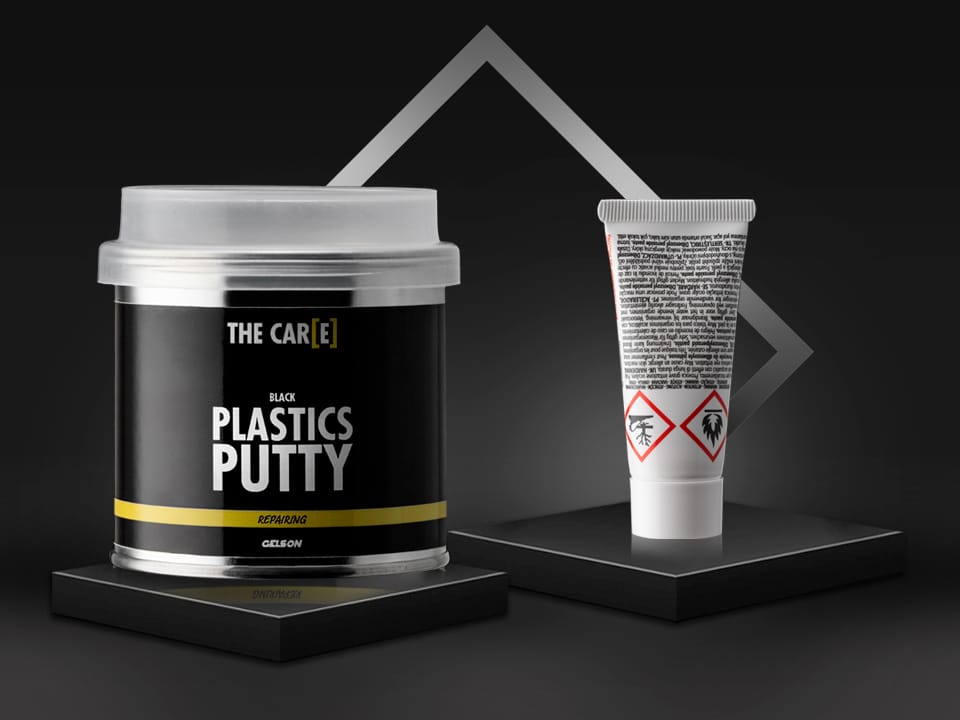
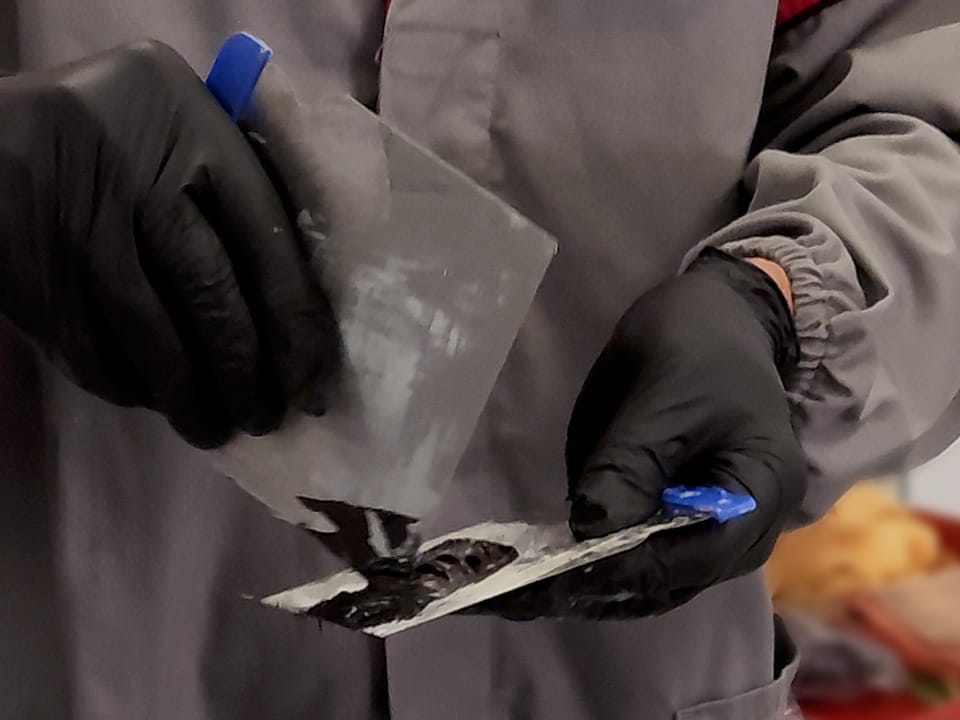
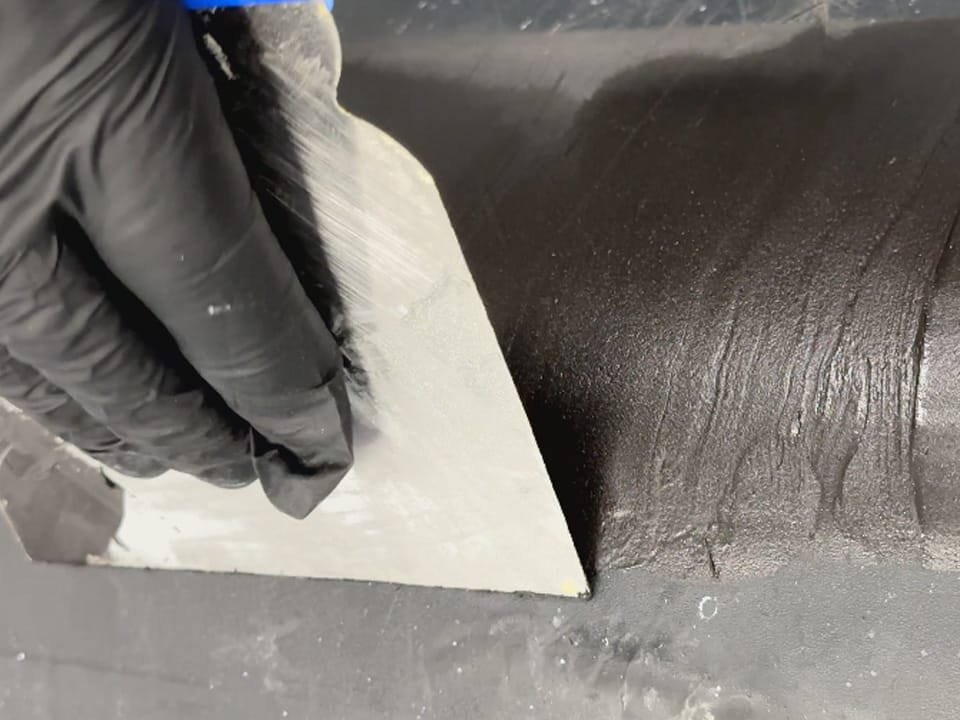
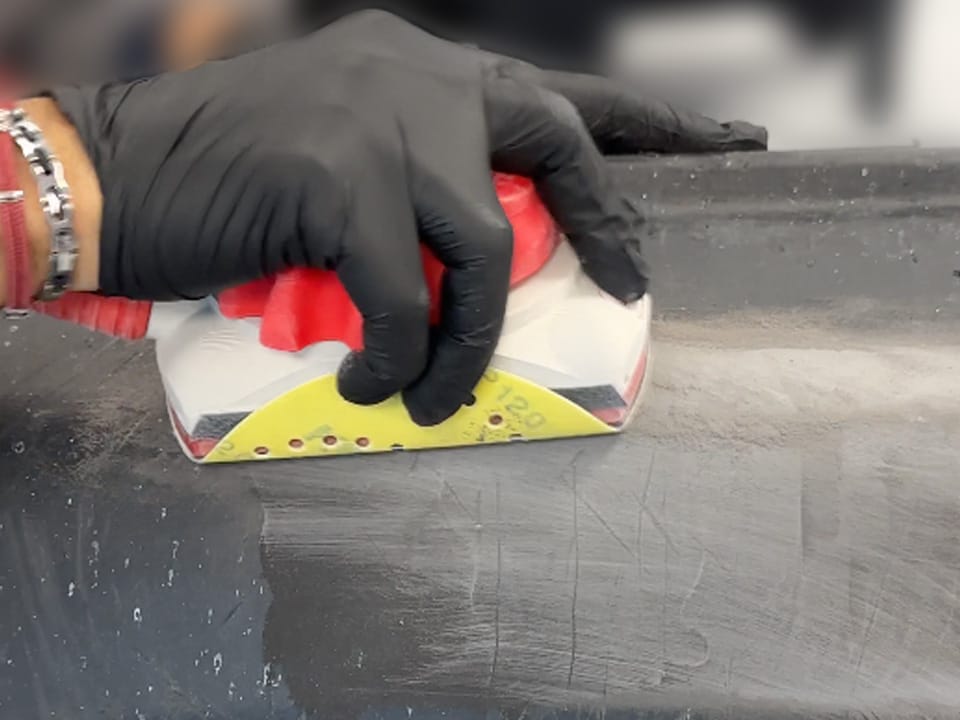



The application of putty to car exterior plastics, such as bumpers, requires attention and precision, as well as the choice of quality products and accessories, to achieve an effective repair. Here's how you can do it:
Materials needed:
Procedure:
By following these steps with care and dedication, you will be perfectly able to apply the filler for exterior plastics and bumpers effectively and obtain a resistant and aesthetically pleasing repair. Be sure to follow the specific manufacturer's instructions for the stucco and paint product you are using.
Read also:
In the world of small DIY car repairs, the application of putty is often used to repair small damages, dents or superficial bumps on the car body. Here's how you can apply stucco correctly.
Materials needed:
Procedure:
Remember that car repair putty is mainly used for light damage or superficial dents.
To guarantee high-quality results, we recommend The Care putty collection which offers a wide range of solutions for small DIY repairs of different materials and surfaces.
These are very high quality fillers, successfully on the market for 60 years, chosen by thousands of professionals, specifically designed to correct imperfections and small marks on the bodywork and other surfaces.
They are all two-component putties, with the catalyst already included in the package, which can be used with the appropriate set of Putty Knife spatulas of different sizes.
Let's discover them briefly together:
Read also:
Car repair putty can be used to repair small damages, dents, streaks, pits or other surface imperfections on the car body.
Some of the most common cases in which you can apply stucco to repair minor damage are:
It is important to note that putty is best suited for small repairs and superficial damage. If you have more serious or extensive damage, such as deep dents or structural damage to the bodywork, professional assistance may be necessary. The correct application of stucco requires skill and patience to obtain high-quality results, as it is a process of some complexity.
We have seen some examples of cases in which the use of repair putties is advisable, but on which surfaces can it be done?
Here are examples of practical application of car repair putty on different types of surfaces:
The types of surfaces where putty can be applied are different and cover a wide range of materials common in automotive construction. However, the size and complexity of the damage will determine whether the repair can be handled DIY or will require assistance from an automotive or marine professional.
To guarantee high quality results, today we recommend The Care putty collection which offers a wide range of solutions for small DIY repairs of different materials and surfaces.
These are very high quality fillers, successfully on the market for 60 years, chosen by thousands of professionals, specifically designed to correct imperfections and small marks on the bodywork and other surfaces.
They are all two-component putties, with the catalyst already included in the package, which can be used with the appropriate set of Putty Knife spatulas of different sizes.
Let's discover them briefly together:
Read also:
You might also like